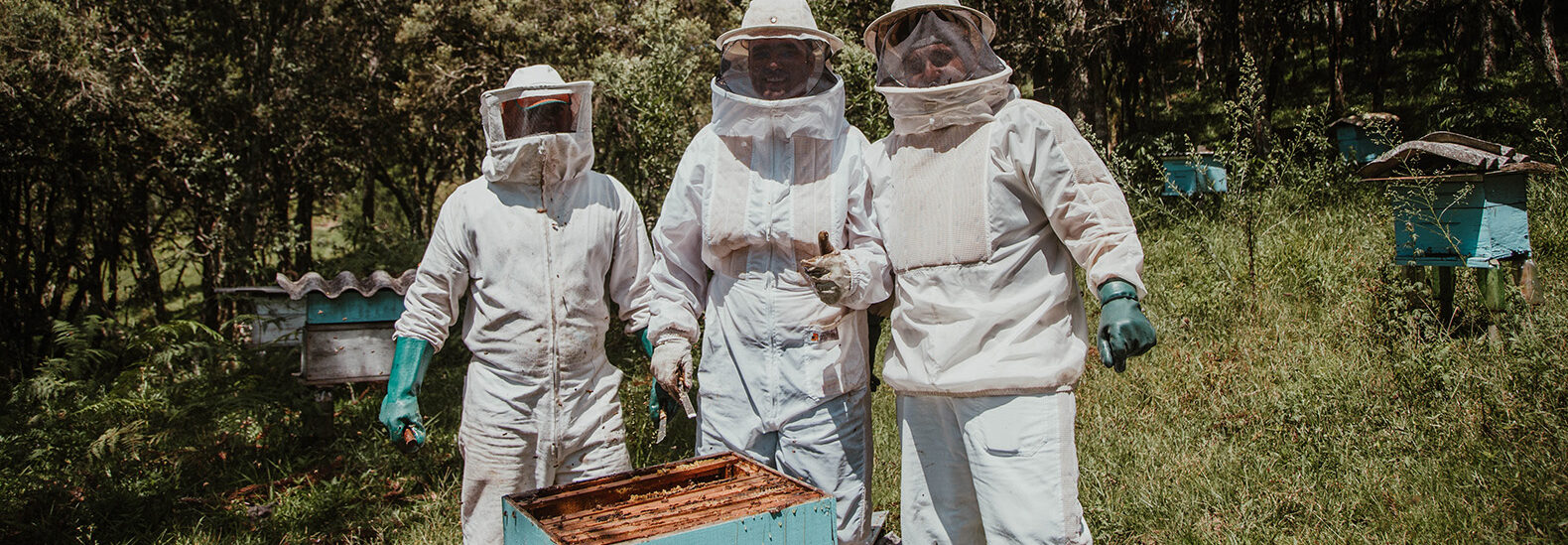Bees are a key part of ecosystems as they help maintain ecosystem biodiversity. They are imperative for pollination, as they transfer pollen from one plant to another, hence allowing plants to reproduce. Besides benefitting the environment, the pollination process is beneficial for humans as it consequently boosts crop production and quality, thus helping farmers. In fact, overall, bees help produce one-third of the world’s food!
Continue reading below
Our Featured Videos
Unfortunately, the result of factors like extensive pesticide use, parasitic bee mites and habitat loss contribute to colony loss. This has resulted in bee populations being at extensive risk. Because of their vital role, beekeeping is a crucial activity. Using available data, Lawn Love was able to compile a list of the top U.S. states for beekeeping. Let’s take a look at their results below.
Related: Protect bees this World Bee Day on May 20
The methodology
Lawn Love determined 15 metrics that fell within four overarching categories to determine the rankings for the best beekeeping states. These four categories were: Output, Earning Potential, Distribution/Competition and Support. Some of the metrics within these groups included honey production, annual colony losses, number of beekeeper associations, bee-friendly legislation and (economic) value of honey production, among others.
Data was examined from all the U.S. states. However, out of the 50 states, 11 were eliminated as they lacked the data needed for the comparison. Based on the available data, Lawn Love was able to determine the best states for beekeeping for the year 2023.

The stats
Overall, the top five states for beekeeping in 2023 (from best to worst) were California, New York, North Dakota, Texas and Ohio. Meanwhile, the five worst states for beekeeping were Louisiana, Nebraska, Utah, Arizona and Wyoming in last place.
These statistics can be broken down further to understand the details of beekeeping practices across the country. Two key metrics are given below.
Most honey-producing colonies
Overall, North Dakota is home to the most honey-producing colonies in the U.S. This is followed by California, Florida, South Dakota and Texas. Meanwhile, the fewest honey-producing colonies can be found in Kansas, Vermont, Kentucky, Virginia and West Virginia.
Highest honey-production value
Closely linked to the previous statistics about honey production are the rankings for honey production value. These rankings are quite similar to the stats in the previous section. In first place, we have North Dakota again, followed by California, Texas, Florida and Montana.

Interesting highlights from the study
Overall, California is a winner and the top state for beekeeping. Some noteworthy facts about beekeeping in California is that the state boasts large populations of healthy bees. So much so that it has the lowest average colony loss by state. Additionally, the state encourages aspiring beekeepers and has the highest number of apiculture classes and establishments. This rank is followed by Ohio in second place, while West Virginia, Washington and Mississippi are tied at third place for the number of apiculture classes offered within a state.
Neonics are a type of synthetic, neurotoxic insecticide used for crops, gardens and even golf courses. They are the most popular insecticide class in the U.S. and have devastating impacts on bee populations. In order to support pollinators, multiple states, including New York, Vermont, Maine and New Jersey have passed laws that limit the use of these harsh substances.
Booming honey sales mean that beekeepers are supported in their journey to care for their hives. For example, New York is home to the most honey suppliers per state. Meanwhile, Ohio boasts the most farmers’ markets, which provide opportunities for beekeepers to sell the honey from their hives.
How each of us can help save the bees
Increased threats to bees mean that there are risks for biodiversity loss and inadequate food production. However, there are recommendations from apiculture experts that can allow each of us to play a role in saving these key pollinators. While there are several routes one can take to support pollinators, we have highlighted two of the simplest and most effective ways to do so below.
The easiest and most highly recommended way to support bees is by creating an environment where pollinators can thrive. This can be done by planting a range of flowering plants in your backyard or balcony garden. The plants should be endemic to your region, as they will be better suited to the environmental conditions. It is best if these plants flower throughout spring, summer and fall. Furthermore, planting native species that are abundant in pollen and nectar helps support the bees to pollinate and helps build species diversity in your locale. Finally, to further prevent harm to the bees, limit the use of pesticides and herbicides as these can have lethal effects on pollinators.
Another less common, yet beneficial way to help save the bees is by supporting nonprofit organizations that aim to restore degraded land to become flowering, thriving environments. Some examples include Pollinator Partnership, Project ApisM and the Xerces Society. By increasing the number of flowering plants in an area, pollination and biodiversity rates are boosted.
Overall, regardless of the method you choose to help save the bees, it is crucial to take action now before it is too late.
via Lawn Love
Images via Pexels

